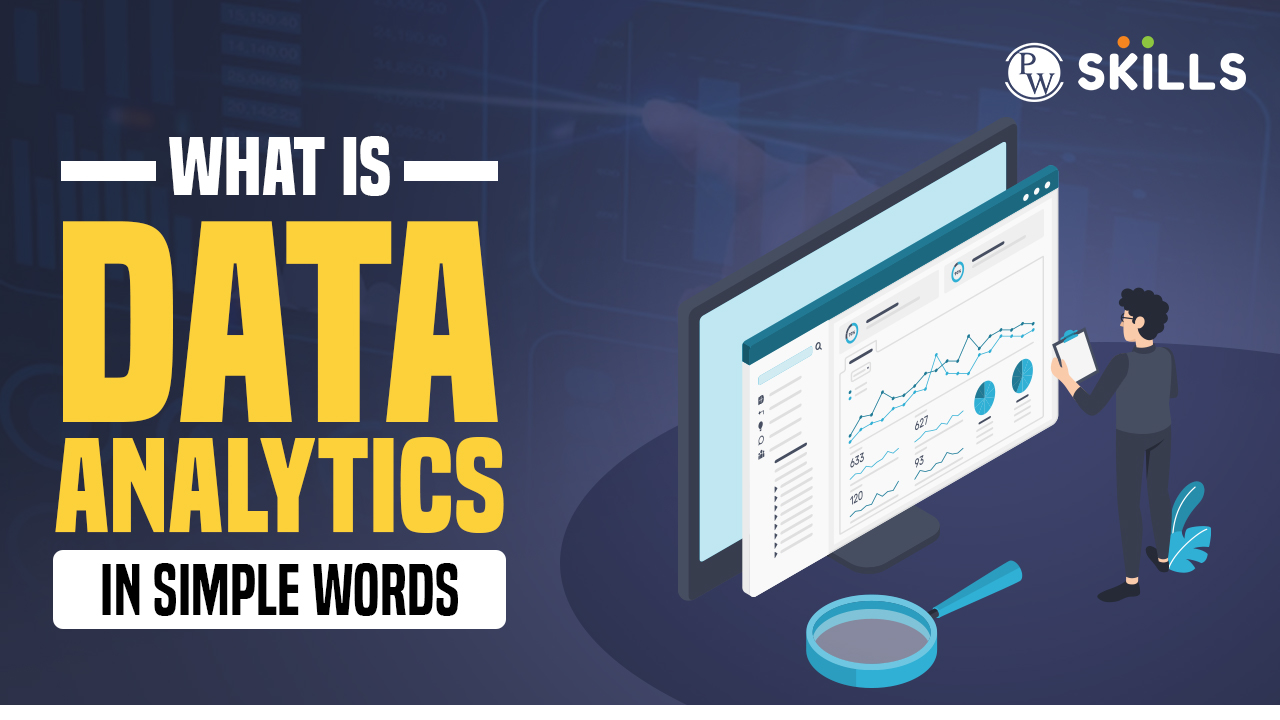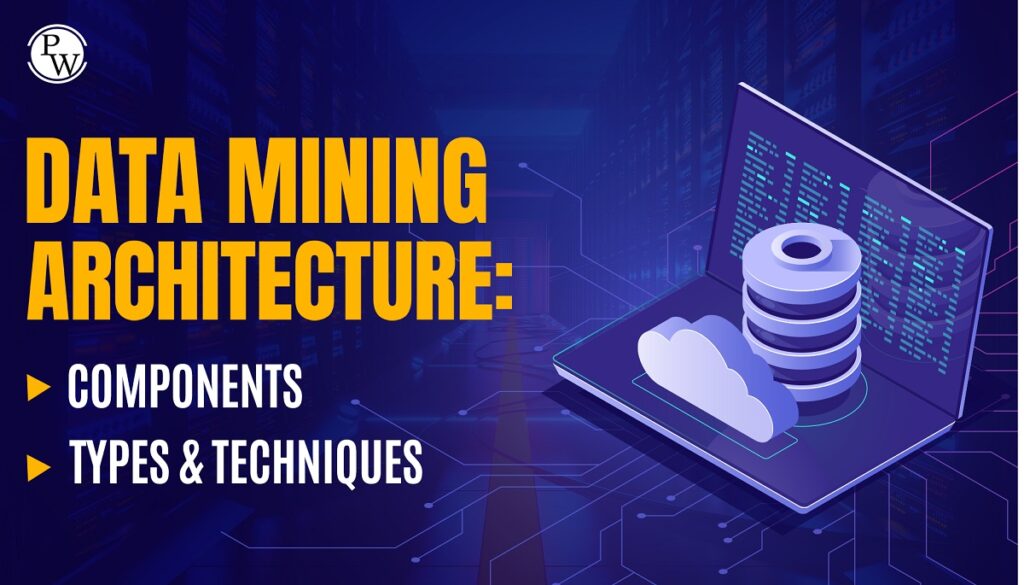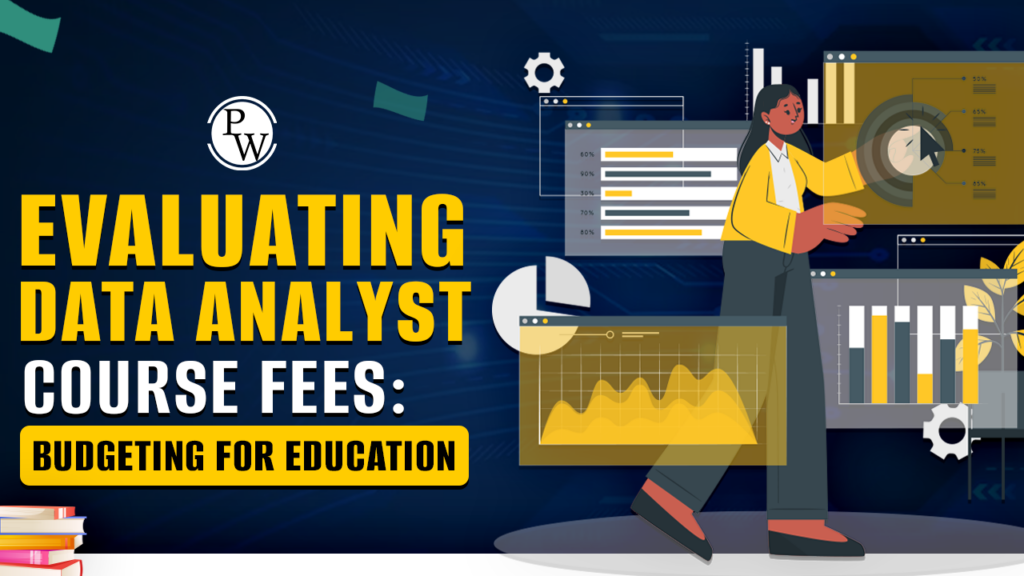Data Analytics Meaning: In the fast-paced, data-driven landscape of the digital age, the term “data analytics” has become increasingly ubiquitous. From shaping business strategies to influencing decision-making processes, data analytics plays a pivotal role in our interconnected world. In this blog, we’ll talk about the data analytics meaning, importance, data analytics techniques, applications, and much more!
Are you passionate about data and numbers? Do you want to make a real impact in the world by turning data into actionable insights? Then the PhysicsWallah Mastering Full Stack Data Analytics Course is the perfect choice for you. Our hands-on approach and industry-relevant content will prepare you for a successful career in data analytics.
What is Data Analytics Meaning?
At its essence, data analytics is about interpreting vast data sets to reveal meaningful insights, trends, and patterns. It involves various techniques to extract valuable information, aiding informed decision-making.
Data analytics encompasses various elements:
- Collecting
- Processing
- Analysing
- Interpreting
- Visualising
These stages collectively aim to convert raw data into actionable intelligence.
Also check: 7 Best Data Analysis Courses for Beginners in 2023
Why is Data Analytics Important?
The significance of data analytics lies in its capacity to empower decision-makers. By utilising historical and real-time data, organisations can make informed choices, managing risks and seizing opportunities. In the competitive business arena today, those embracing data analytics gain a substantial advantage. It enables organisations to stay ahead of trends, comprehend customer behaviour, and adjust strategies for optimal effectiveness.
Data analytics optimises processes and workflows, identifying areas for improvement and efficiency gains. By streamlining operations, organisations can reduce costs, improve productivity, and enhance overall performance.
How Does Big Data Analytics Work?
Big data analytics involves the processing and analysis of massive datasets that traditional data processing applications cannot handle efficiently. The three defining characteristics of big data—volume, velocity, and variety—present unique challenges and opportunities for analytics.
The Three Vs: Volume, Velocity, Variety
- Volume: Refers to the sheer size of the data. Big data sets are often measured in petabytes or exabytes, requiring specialised tools and technologies for processing.
- Velocity: Represents the speed at which data is generated, processed, and analysed. Real-time analytics is essential for industries such as finance, healthcare, and telecommunications.
- Variety: Encompasses the diverse types of data, including structured, unstructured, and semi-structured. This diversity requires flexible analytical approaches to extract meaningful insights.
Technologies and Tools in Big Data Analytics
A myriad of technologies and tools facilitate big data analytics. From distributed computing frameworks like Apache Hadoop to NoSQL databases, each plays a crucial role in handling the complexity and scale of big data.
Also check: 10 Most Popular Big Data Analytics Software in 2023
What are the Different Data Analytics Techniques?
Descriptive Analytics
Descriptive analytics focuses on summarising historical data to provide a clear picture of what has happened. Key performance indicators (KPIs) and data visualisation tools are often used to convey insights in an easily digestible format.
Diagnostic Analytics
Diagnostic analytics delves deeper into data to understand why certain events occurred. It involves root cause analysis, uncovering the factors that contributed to specific outcomes or trends.
Predictive Analytics
Predictive analytics leverages statistical algorithms and machine learning models to forecast future trends or outcomes. It enables organisations to anticipate changes and proactively adjust strategies.
Prescriptive Analytics
Prescriptive analytics takes predictive analysis a step further by providing recommendations for actions. It guides decision-makers on the optimal course of action based on the predicted outcomes.
Machine Learning in Data Analytics
Machine learning algorithms play a crucial role in data analytics, automating the process of identifying patterns and making predictions. Supervised and unsupervised learning techniques contribute to the evolution of analytics capabilities.
Can Data Analytics be Automated?
Yes, data analytics can be automated. AI and machine learning progress enable automated data analysis, speeding up insights for organisations.
How is Data Analytics Used in Business?
In the dynamic business landscape, data analytics is pivotal for growth, operational efficiency, and a competitive edge. Let’s explore key areas where data analytics shapes business success.
Business Intelligence and Reporting:
Business intelligence (BI) and reporting tools are the bedrock of data analytics in business. These tools collect, process, and analyse historical and real-time data, presenting it in visually compelling dashboards and reports. Executives and decision-makers use BI to gain insights into key performance indicators (KPIs) and make informed decisions.
BI tools enable businesses to:
- Monitor KPIs: Track and visualise essential metrics such as sales performance, customer satisfaction, and operational efficiency.
- Identify Trends: Uncover patterns and trends in historical data, enabling proactive decision-making.
Customer Analytics:
Understanding customer behaviour is paramount for businesses aiming to deliver personalised experiences and build lasting relationships. Data analytics empowers organisations to analyse customer data and derive actionable insights.
Key aspects of customer analytics include:
- Segmentation: Divide customers into segments based on demographics, behaviour, or preferences to tailor marketing strategies.
- Predictive Modelling: Forecast customer behaviour, enabling businesses to anticipate needs and personalise interactions.
Operational Analytics:
Operational analytics focuses on optimising internal processes to improve efficiency and reduce costs. By analysing data related to supply chain management, production workflows, and resource utilisation, businesses can streamline operations.
Operational analytics helps businesses:
- Identify Bottlenecks: Pinpoint areas of inefficiency in workflows and supply chains for targeted improvements.
- Resource Optimization: Ensure optimal use of resources, whether it’s workforce management or inventory control.
Fraud Detection and Risk Management:
In an era where digital transactions and interactions are ubiquitous, businesses face increased threats from fraud and various risks. Data analytics plays a crucial role in identifying anomalies and mitigating potential risks.
Key elements of fraud detection and risk management include:
- Anomaly Detection: Utilise machine learning algorithms to identify unusual patterns that may indicate fraudulent activities.
- Predictive Analysis: Anticipate potential risks by analysing historical data and external factors.
Supply Chain Analytics:
For industries involved in manufacturing and distribution, supply chain analytics is indispensable. By leveraging data, businesses can optimise the entire supply chain, from procurement to distribution.
Supply chain analytics enables businesses to:
- Enhance Visibility: Gain real-time visibility into the entire supply chain to identify inefficiencies and bottlenecks.
- Demand Forecasting: Use historical data to predict demand, ensuring optimal inventory levels and minimising stockouts.
Financial Analytics:
Financial analytics is crucial for businesses to make informed decisions regarding budgeting, forecasting, and overall financial health. By analysing financial data, organisations can ensure fiscal responsibility and sustainable growth.
Key components of financial analytics include:
- Budgetary Analysis: Evaluate actual spending against budgeted amounts, identifying areas for cost optimization.
- Forecasting: Utilise historical financial data to predict future financial trends and performance.
Human Resources Analytics:
In the realm of human resources, data analytics aids in workforce management, talent acquisition, and employee engagement. By analysing HR data, businesses can make data-driven decisions to optimise their human capital.
Human resources analytics involves:
- Talent Acquisition: Use data to identify the most effective recruitment channels and improve the hiring process.
- Employee Engagement: Analyse employee data to understand factors influencing engagement and retention.
Marketing Analytics:
Marketing analytics empowers businesses to measure the effectiveness of their marketing campaigns, optimise strategies, and allocate resources efficiently.
Marketing analytics strategies include:
- Campaign Performance: Evaluate the success of marketing campaigns by analysing data on customer engagement and conversion rates.
- Customer Acquisition Cost (CAC): Calculate the cost of acquiring a new customer, aiding in budget allocation.
Predictive Maintenance:
In industries where machinery and equipment play a vital role, predictive maintenance is a game-changer. By analysing data from sensors and historical maintenance records, businesses can predict equipment failures before they occur.
Predictive maintenance benefits businesses by:
- Minimising Downtime: Anticipate and address equipment issues before they lead to costly downtime.
- Optimising Maintenance Schedules: Conduct maintenance activities based on actual equipment condition rather than fixed schedules.
Data Analytics Meaning in Business
In the realm of business, data analytics is a strategic imperative, guiding decision-makers to navigate complexities and capitalise on opportunities. It involves the systematic exploration of data to extract actionable insights, informing key business decisions.
By integrating data analytics into business strategy, organisations gain a competitive edge, optimise operations, and foster innovation. Challenges, such as data quality issues, are met with proactive solutions. Successful implementation not only mitigates risks but also ensures a robust return on investment (ROI), affirming data analytics as a cornerstone for informed, forward-thinking enterprises.
Also read: Choosing the Right Data Analytics Platform for Your Business
Data Analytics Examples
Case Studies of Successful Data Analytics Implementation
Netflix: Personalised Content Recommendations
Netflix, a global streaming giant, utilises data analytics to provide personalised content recommendations to its users. By analysing user viewing history, preferences, and viewing habits, Netflix’s recommendation algorithm suggests movies and TV shows tailored to individual tastes. This not only enhances user satisfaction but also keeps subscribers engaged, contributing to increased retention rates.
Amazon: Dynamic Pricing Strategy
Amazon adjusts prices in real-time using data analytics. Factors like demand, competitor pricing, and sales history influence this dynamic pricing strategy. It helps Amazon stay competitive, boost revenue, and adapt quickly to market changes. The e-commerce giant’s success illustrates the power of data analytics in optimising pricing strategies for increased profitability.
Walmart: Supply Chain Optimization
Walmart, a major global retailer, optimises its supply chain with data analytics. By analysing inventory, customer demand, and logistics data, Walmart ensures efficient stock management, minimises out-of-stock instances, and enhances overall supply chain performance. This strategic use of data analytics contributes to cost savings and improved customer satisfaction.
Industry-specific Examples
Healthcare: Predictive Analytics for Patient Care
In healthcare, data analytics is vital for predicting patient outcomes and optimising treatment plans. Predictive analytics models help hospitals identify patients at risk, allowing for proactive intervention and personalised care. This not only betters patient outcomes but also cuts healthcare costs.
Finance: Fraud Detection and Risk Management
Financial institutions employ data analytics for fraud detection and risk management. By analysing transaction patterns, user behaviour, and other relevant data, banks can identify potentially fraudulent activities in real-time. Additionally, risk management models use data analytics to assess and mitigate financial risks, ensuring the stability and security of the financial system.
E-commerce: Customer Segmentation and Targeted Marketing
E-commerce platforms utilise data analytics to segment customers based on their preferences, purchase history, and browsing behaviour. By understanding customer segments, businesses can create targeted marketing campaigns, personalised promotions, and product recommendations. This enhances the overall shopping experience, increases customer satisfaction, and drives higher conversion rates.
Practical Applications in Everyday Life
Social Media Algorithms
Social media platforms employ data analytics to customise content feeds for users. Algorithms analyse user interactions, content preferences, and engagement patterns to deliver personalised content. This not only keeps users engaged but also serves as the foundation for targeted advertising.
Fitness Tracking Apps
Fitness tracking apps utilise data analytics to provide personalised insights into users’ health and fitness activities. By analysing data from wearables and user input, these apps offer tailored workout recommendations, track progress, and provide valuable feedback. This personalised approach motivates users to achieve their fitness goals.
Weather Forecasting
Meteorological agencies leverage data analytics to process vast amounts of weather-related data from satellites, sensors, and historical records. By analysing this data, weather forecasting models can predict weather patterns, track storms, and provide accurate forecasts. These forecasts are crucial for public safety, agriculture, and various industries dependent on weather conditions.
Also read: Data Collection in Data Analytics 2023: Types, Tools, Steps
Conclusion
As tech progresses, the future for data analytics looks bright. New trends, changing tech, and the persistent merging of analytics into our lives prepare the ground for an energetic and thrilling future. From grasping basics to studying practical instances, it’s clear: data analytics isn’t just a tool; it’s a transformative power moulding how we decide, do business, and navigate the data-packed 21st-century terrain.
FAQs
What role does data quality play in successful analytics implementation?
Data quality is pivotal. Inaccurate or incomplete data can skew insights and decisions. Implementing rigorous data quality measures ensures the reliability and effectiveness of analytics outcomes.
How can businesses overcome resistance to integrating data analytics into their operations?
Overcoming resistance involves fostering a data-driven culture, providing training, and showcasing success stories. Communicating the benefits and aligning analytics initiatives with overall business goals is key.
How does predictive analytics contribute to future-proofing business strategies?
Predictive analytics forecasts future trends, enabling organisations to anticipate shifts in market dynamics. By leveraging predictive insights, businesses can proactively adjust strategies and remain agile in an ever-changing landscape.
What are some practical examples of everyday applications of data analytics for individuals?
Everyday applications include personalised recommendations on streaming platforms, fitness tracking apps, and the targeted content presented by social media algorithms. Data analytics enhances user experiences in various aspects of daily life.
How can organisations measure the success and ROI of their data analytics initiatives?
Success can be measured by assessing key performance indicators aligned with business goals. Calculating the return on investment involves comparing the value generated against the costs incurred in implementing and maintaining data analytics solutions.





